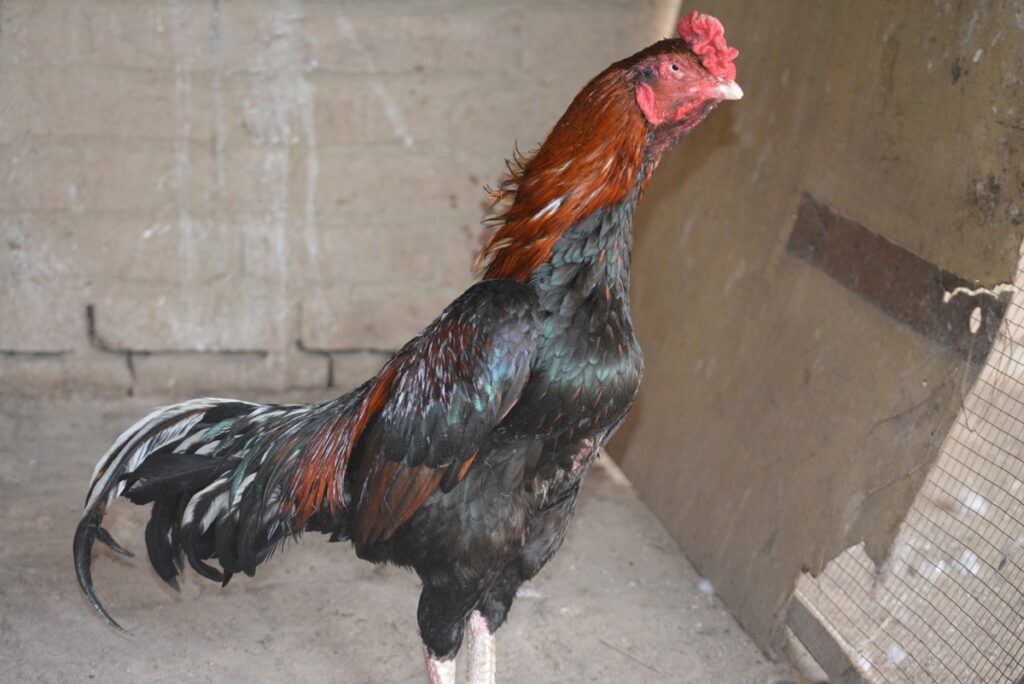Introduction : Asil, also known as Aseel Chicken, is a unique and ancient breed with distinct characteristics and varieties. In this comprehensive guide, we will explore the various aspects of Asil Chicken, including its origins, physical traits, varieties, behavior, advantages, and disadvantages.
Breed Profile
Name: Asil or Aseel Chicken
Varieties: Numerous, categorized by size and color
Chicken Weight: 4 to 5 lbs
Eggs: 5-20 tinted
Cost: Typically $100 to $120
Rarity: Considered rare
Purpose: Ornamental
Egg Laying: Poor
Egg Color: Cream or Tinted
Egg Size: Medium to large
Comb Type: Pea Comb
Feathered Legs: No
Number of Toes: 4
Cold Hardiness: Hardy in winter
Heat Tolerance: Not especially heat-hardy
Personality: Aggressive and intelligent; males should be kept separate from other males
Uses: Fighting, ornamental, and as pets
Origin of Asil Chicken
Asil Chicken is an ancient breed originating from India, particularly Punjab and South India. It’s renowned in southern states like Andhra Pradesh and Tamil Nadu. While not standardized in India, its popularity led to standardization in the USA, UK, and Australia. Asil chickens are famous for cockfighting, a tradition in some Indian regions. They are known for their strength, intelligence, and aggressive behavior from a young age.
Physical Characteristics of Asil Chicken
Asil chickens are known for their striking appearance, with wide chests, long necks, and legs compared to other breeds. They come in various varieties, often categorized by color or physical traits. Some have long tails and thick, parrot-like beaks, while others have feather beards or tufts on their heads. Asil roosters can weigh 3-4 kg, while hens weigh 2.5-3 kg on average.
Some Asil Chicken Varieties
Kilimookku Aseel (Parrot Beak/Nose Long Tail): These are muscular and resemble bodybuilders with long tails and thick beaks. They are known for their proud attitude and fighting spirit.
MayilKaruppu (Black and Yellow)
Kagam/sengaruppu (Black and Red)
Sevalai (Red)
KarumKeeri/Senkeeri (Black/Red Dotted)
Sambal Boothi (Grey)
KokkuVellai (White)
Noolan (White and Black)
Pondram (Golden Brown)
Asil Chicken Behavior
Asil hens are seasonal layers but excellent sitters and protective mothers. They tend to become broody. Asil chicks can be aggressive from an early age and should be kept separate to avoid fighting. Despite their fighting nature, they are friendly toward humans and can be easily tamed. Asil chickens thrive in dry conditions and are not well-suited for cold climates.
Advantages of Asil Chicken Farming
- Beautiful and intelligent birds
- Healthy meat and eggs rich in vitamins and proteins
Loyal pets - Resistant to various weather conditions and diseases
Disadvantages of Asil Chicken Farming
- Stubborn and aggressive behavior
- Difficulty in maintaining multiple roosters or hens together
- Longer maturity time
- Poor egg-laying capabilities
- Expert Comment
conclusion
Asil Chicken is a remarkable breed with a rich history and distinctive characteristics. While their aggressive nature and limited egg production may not suit all poultry enthusiasts, they remain an important part of India’s cultural heritage and have found a place in ornamental farming worldwide.


